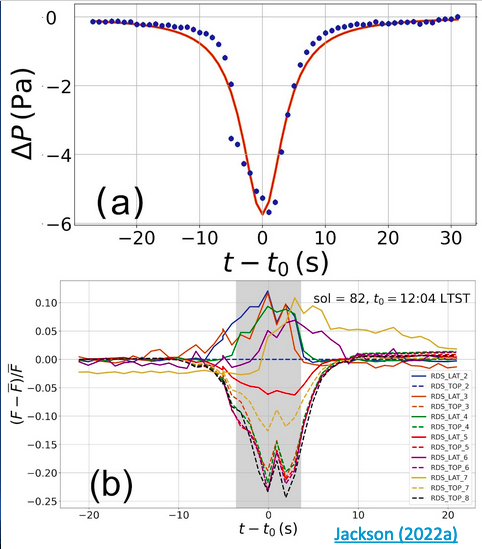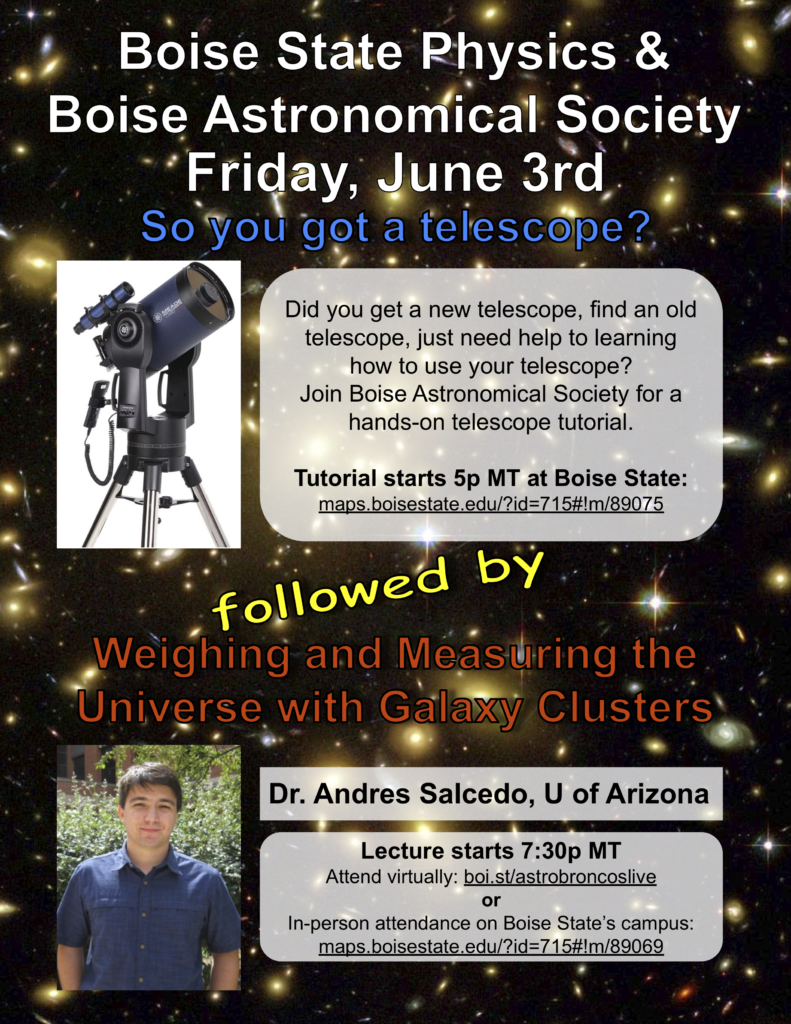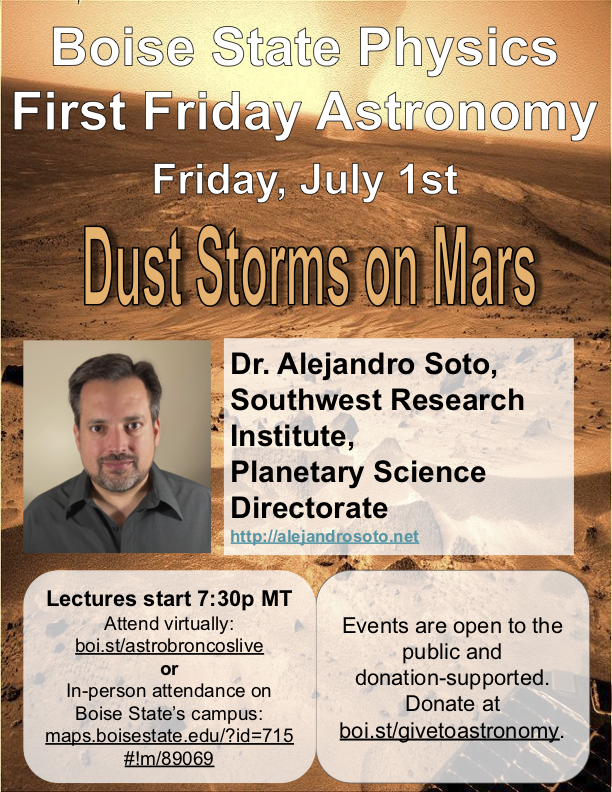Want to learn more about life’s chemical story? Join Boise State Physics for our First Friday Astronomy event on Fri, Sep 2 at 7:30p MT when we will host University of South Florida’s Prof. Matthew Pasek. Attend in-person (https://maps.boisestate.edu/?id=715#!m/89075) or virtually (boi.st/astrobroncoslive).
Like the musical “Hamilton”, the James Webb Space Telescope lives up to the hype. Already, astronomers have used it to discover galaxies older and more distant than ever before, and it’s only getting started. One of the astronomical processes JWST will elucidate is the formation of stars. Understanding star formation is critical if we want to answer questions about the origin of life on Earth and the possibility for life elsewhere in the universe. But even though scientists have been thinking about star formation since before the word “scientist” existed, some of the most basic questions about the process remain unanswered.
Continue ReadingJoin Boise State Physics on Friday, July 1st at 7:30p MT for our First Friday Astronomy event to hear Dr. Alejandro Soto of SwRI discuss the science of “Dust Storms on Mars”.
The presentation will be live-streamed and recorded at boi.st/astrobroncoslive.
Brian Jackson’s Press Conference Presentation
Contact Info
- Scientist: Prof. Brian Jackson – bjackson@boisestate.edu – @decaelus – Don’t call my office.
- Boise State Press Officer: Brianne Phillips – briannephillips@boisestate.edu
Summary
An key source of dust, dust devils help drive weather and climate on Mars. With a sophisticated suite of meteorological instruments, the Mars 2020 Perseverance rover can detect when a dust devil passes nearby — the instruments can see the pressure and dust perturbations from the dust devils. (Wind data were not available by the time of our work, so we didn’t include any — oh, well, next time.)

In a two new studies, my research group used data from Mars 2020 to look for passing dust devils and spotted almost 1000 encounters over the missions first 178 days. We confirmed previous weather predictions that Mars 2020 would see more than other recent missions, including InSight and Curiosity. We also found out that there were lots of whirlwinds that passed by Mars 2020 that actually didn’t raise any dust — only about a quarter of whirlwinds showed any signs of dust-lifting.
These kinds of studies are important for understanding the martian dust cycle and the contribution from dust devils. Scientists know Mars’ dust cycle strongly affects climate, and increases in atmospheric dust increase the rate of water loss into space. Martian dust may even be toxic, so dust devils could pose a big hazard for humans on Mars.
Research Publications
- Jackson, B. (2022) “Estimating the Heights of Martian Vortices from Mars 2020 MEDA Data.” Planetary Science Journal.
- Jackson, B. (2022) “Vortices and Dust Devils as Observed by the Mars Environmental Dynamics Analyzer Instruments on Board the Mars 2020 Perseverance Rover.” Planetary Science Journal.
Jackson’s AAS Science Presentation

Although our current understanding of gravity, the theory of general relativity, arose only one hundred years ago, scientists were speculating about exotic gravitational effects going back to before the word “scientist” even existed. Today, astronomers employ gravity in a variety of ways to study the cosmos, to look for planets outside our solar system and even to weigh some of the largest celestial bodies in existence. These measurements have shed light on some of the darkest of astronomical mysteries.
Continue Reading
First Friday Astronomy/So You Got a Telescope? Event – 2022 June 3
Did you get a new telescope, find an old telescope, just need help to learning how to use your telescope? Join Boise Astronomical Society for a hands-on telescope tutorial. Tutorial starts 5p MT at Boise State: maps.boisestate.edu/?id=715#!m/89075.
followed by
Weighing and Measuring the Universe with Galaxy Clusters – Dr. Andres Salcedo, U of Arizona
Lecture starts 7:30p MT
Attend virtually: boi.st/astrobroncoslive or In-person attendance on Boise State’s campus: maps.boisestate.edu/?id=715#!m/89069
Watch Dr. Salcedo’s talk!

